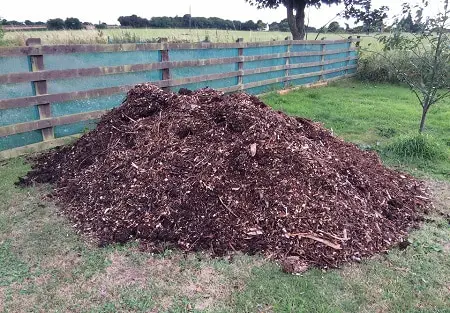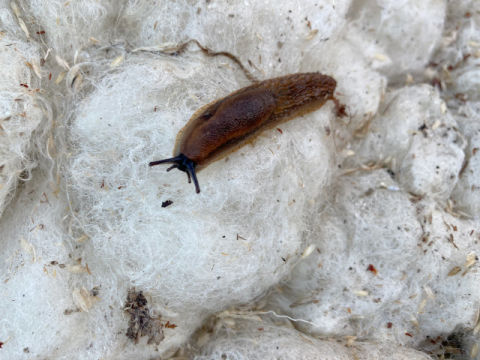Mulching, grow with less effort and less watering
Gardeners talk about mulch and mulching, particularly organic gardeners and there’s a really good reason for it. So what is mulch? Very simply, it is a layer that is put over the surface of the soil.
Why use a mulch?
First of all, a layer that excludes the light will reduce the amount of weeding that needs to be done because without the light, a lot of weed seeds won’t germinate.
The second and really useful thing it does is locks moisture down into the soil. If you put a mulch layer on to damp soil, it will hold that moisture down into the soil. This makes it available for the plants to use and reduce the amount of evaporation due to the glorious sunshine.
Thirdly, when you use an organic matter on the ground, all the nutrients return to the soil. Mulches can be, for example, wood chips, homemade compost, straw, hay, newspaper or leaf mould. Because worms do what worms do, they will come up from the soil. They will take the mulch layer down, incorporate and mix it into the soil and it will improve the soil. It will improve the soil structure and it can improve the soils microbiology, the living organisms within the soil.

What material is best for mulch?
There’s a whole host of materials that can be used as mulches, one of my favourites is wood chips and these will break down over time and be highly water attentive. Another mulch that I like to use is grass clippings as long as the grass hasn’t been treated with weedkiller. Grass clippings do an amazingly good job at keeping the ground moist. I use grass clippings as a mulch around my potatoes. Over the winter it breaks down, adding its nutrients to the soil. Bit by bit, both the soil structure and microbiology are improved.
Sheet mulch on a roll
I used to use weed suppressing membrane as a mulch to suppress the weeds and effectively. I’d leave it on the ground for three to 12 months and then take the plastic up and cover this area in organic matter and allow that to work itself into the soil for the winter and then the area is ready for growing in next year.
Nowadays I prefer to use a plastic-free sheet mulch from Mulch Organic (no affiliate link, I just love this product). I use a heavyweight cornstarch roll that starts to break down after about three years. After a few months, I cut small holes in the membrane to plant through it and this is working well to allow me to create a new garden from previous farmland.
Not usually on a roll, but very effective is the use of cardboard as a mulch. Once placed on the ground, water well to thoroughly soak it and place stones or bricks or compost to hold it in place. A single layer of cardboard will break down quite quickly, so you will need to replace it regularly. Do not lift the old cardboard, simply place additional layers on top of the existing one.
If you don’t have sufficient waste cardboard among your household waste, try asking at local bicycle shops or furniture stores as they often have large boxes that they are happy to give you. I used to go to the local garden centre where they had a stash of boxes that customers could take free of charge. I also used these boxes to make instant raised beds.
Animal products mulch
I have access to large quantities of used duck bedding and unlike chicken bedding this is mild enough to be able to put straight on to the growing beds.
Chicken bedding is very strong and ‘hot’. It is alkaline, so it needs to sit in a heap and rest for at least 12 months, if not longer so that it doesn’t actually burn the plants that you are growing around it or in it. Once it’s rested and has broken down, it’s also really good; it’s high in nitrogen and again the soil underneath it stays very moist.
I have been experimenting with the use of sheep’s fleece as a mulch in the garden. So far it seems fairly good at keeping the moisture in the soil, but it does little to prevent weeds pushing up through it. I had been told that it was also a good way to discourage slugs from the garden because slugs do not like to move over wool, but it seems our local slugs didn’t get that memo!

Waste green organic materials
The other thing that I use regularly is pond weed. One of my neighbours has quite a big pond and they’ve got a weed in it and I would consider this an invasive weed. I wouldn’t want it in my pond, but our ducks love to eat it. I’ve tried several times growing it for them in the pond but they’ve just eaten it. However the neighbour very kindly gives us huge quantities of this. It is high in nutrients, high in nitrogen, breaks down quite quickly. Mixed with the straw from the duck bedding very quickly forms a really nice compost and in the meantime it’s great for excluding the light from around plants.
Living Mulch
Earlier this year I saw a post on social media from Katy Shepherd who teaches permaculture. She showed a pile of seeds that she was going to be use to grow a living mulch. The plants will be edibles and flowers for pollinators and they’ll form a thick layer to cover the soil. It would be a slower way to cover the soil, but an attractive, productive one which I tried for the first time in 2020. My first attempt wasn’t entirely successful, the weather was very dry after I scattered the seeds over the soil surface. I failed to water them enough, so only a few seeds germinated. I will try this method again another year.
If you enjoyed this post, you may like to learn more about ornamental gardens and flower gardening.
- Daisy flowers for autumn - January 2, 2026
- Flowers at Christmas and mid winter - December 31, 2025
- Autumn Groundcover - December 19, 2025

Mulch is brilliant! We are especially conscious of water saving here in Australia and mulched beds makes an enormous difference. Our latest favourite for around veg is compressed sugar cane mulch. It goes a long way, allows water to penetrate and is easy to work with.
I tried the living mulch with mixed seeds and had similar luck – lack of water meant lack of success! Will have another go though because I really like the idea. Great article.